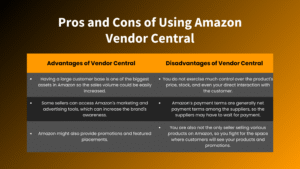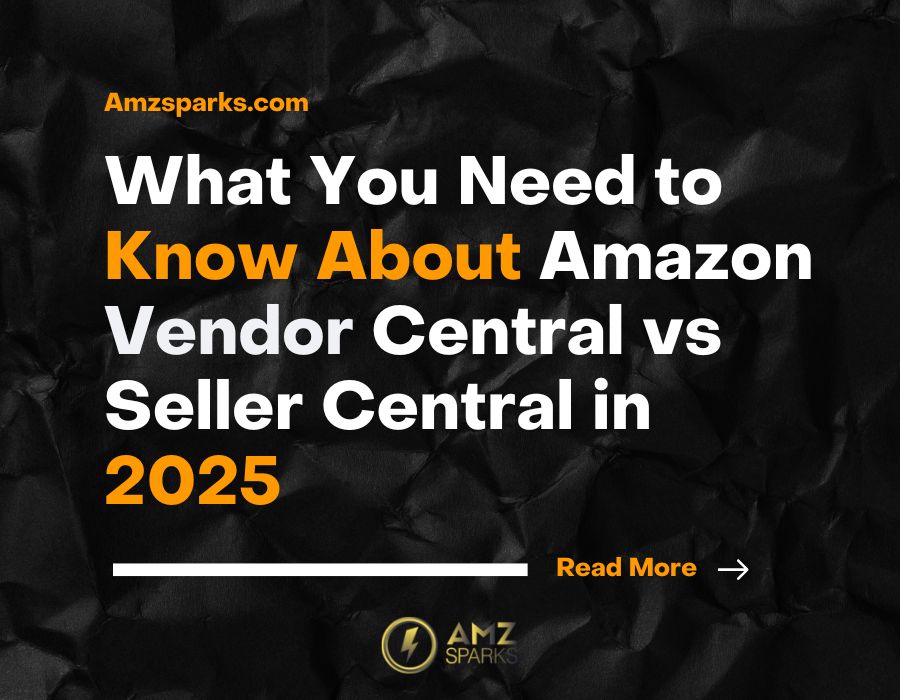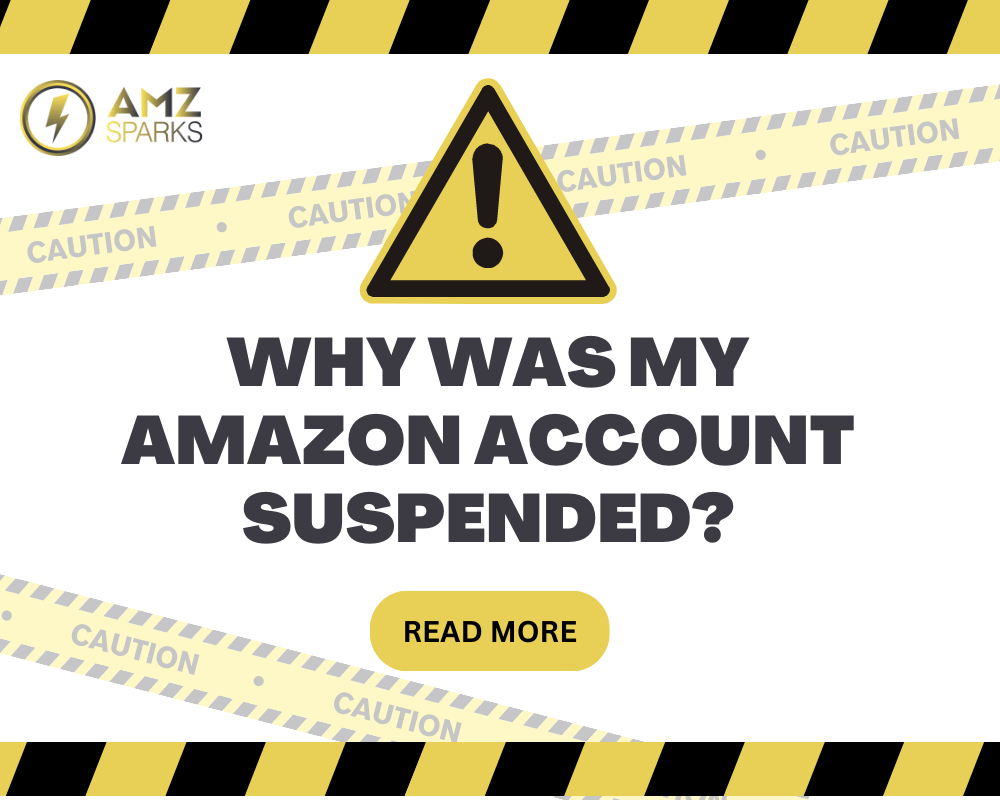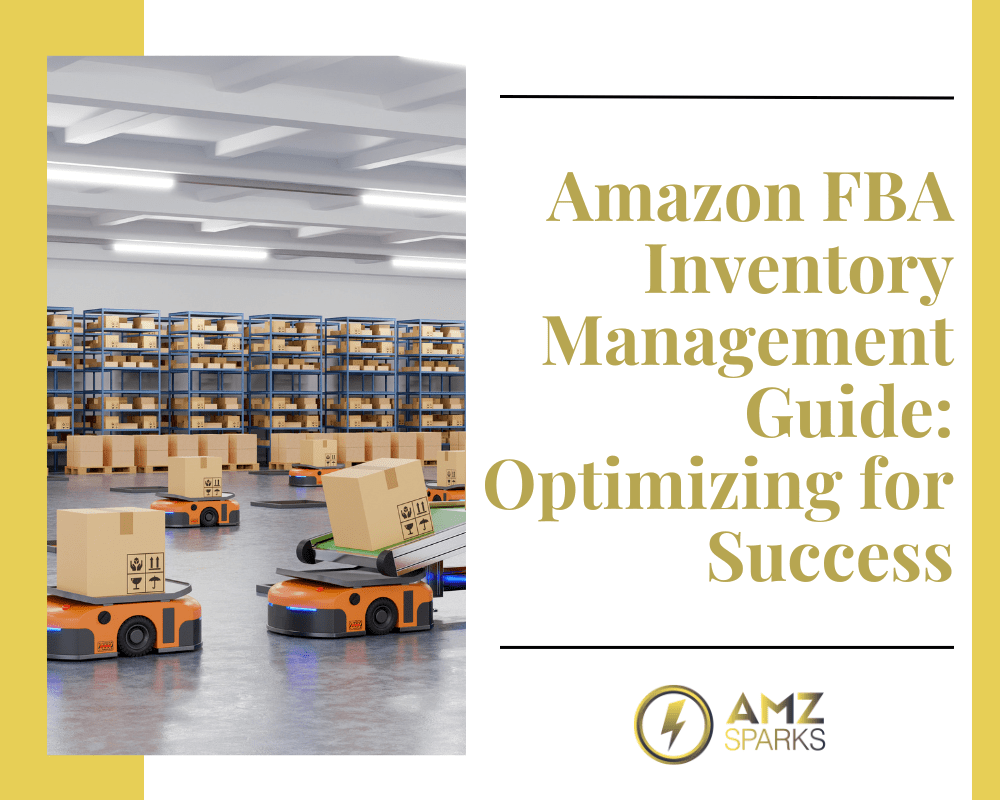Amazon, the world’s largest online marketplace, offers two primary avenues for seller advantages to reach customers: Amazon Vendor Central and Amazon Seller Central. Both tools allow for selling products on Amazon; however, they are different platforms with various strengths and weaknesses. It might be significant not to confuse Amazon Vendor Central and Amazon Seller Central since decision-making is vital depending on the qualifications of the business.
In a Nutshell
This blog compares Amazon Vendor Central vs Seller Central, detailing their key differences, pros, and cons. It helps you determine which platform best fits your business needs and provides insights on transitioning between them.
What is Amazon Vendor Central?
While using Amazon Vendor Central, your business is represented as a wholesale sundries provider. Amazon is that direct selling the products you have developed to Amazon in large quantities is allowed. Amazon then takes the role of the merchant, who is involved with warehousing, cataloguing, and selling your items to consumers.
As a participant in Vendor Central, you enter into a wholesale selling business relationship with Amazon. The merchant merely offers his/her goods to Amazon. The company then sells them to its customers on the seller’s behalf. Large branded organizations and organizations that can supply their products in large quantities may find this model helpful.

What is Amazon Seller Central?
The retail model available on Amazon Seller Central is that you receive, store, price, and communicate with customers on your own behalf. These platform differences give you more business control but require more active participation.
Seller Central benefits you as a Seller because you can control your stock and charge the prices you want. Amazon carries out the function of a marketplace comparison wherein you can offer your products for sale. This model is appropriate for those people who desire immense control and adaptability in implementing their strategies.
Advantages of Seller Central
- The prices of the products, the stock, and the relations with the customers are all in your hands.
- You can earn better gross margins than Vendor Central has in store for distributors.
- You are quite easily able to alter your portfolio of products and services and your pricing schemes.
Disadvantages of Seller Central
- You are equally involved in processing orders, attending to your customers, and managing the stock.
- The Amazon marketplace is more competitive regarding pricing and market strategies.
- You are bound to Amazon’s selling fees, such as referral fees and possible storage fees.
Key Differences Between Vendor Central and Seller Central
Understanding the fundamental differences between Amazon Vendor Central and Seller Central is imperative for determining the right approach regarding the chosen business model.
| Feature | Amazon Vendor Central | Amazon Seller Central |
| Inventory Ownership | Amazon owns the inventory. | You own the inventory and control stock levels and fulfillment rates. |
| Pricing Control | Amazon determines the selling price. | You set the price based on market conditions and business objectives. |
| Customer Service | Amazon handles customer concerns, returns, and refunds. | You directly interact with customers and provide support. |
| Payment Terms | Amazon pays on net terms. | Amazon pays you directly for each sale, minus commissions. |
| Fees and Charges | You may incur chargeback and return fees. | You pay referral fees, closing fees, and storage fees. |
| Eligibility Criteria | Amazon invites sellers based on various factors. | Any business can open a Seller Central account. |
How to Choose the Right Model for Your Business
The decision on which method to use, Amazon Vendor Central or Seller Central, requires an assessment of the business objectives, specific product features, and the resources at your disposal. Here are some factors to consider:
Product Type
Some categories of products are more suitable for one of the models than for the other. For instance, products that are popular brand names rely most of the time on Vendor Central, while products that are few in the market but different will do well on Seller Central.
Business Goals
Consider your long-term objectives. If growth is more important to you and you want to take advantage of Amazon’s marketing muscle, then Vendor Central could be appealing. However, Seller Central is more flexible if you wish to have more control over the pricing strategy and customer experience.
Resources
Manage your team’s general skills and assets. Overlapping means that Seller Central has a greater need for operational engagement, although Vendor Central entails a better relationship with Amazon.
Inventory Management
Evaluate the capacity for managing stock. The Vendor Central is concerned with inventory, and the Seller Central needs adequate inventory management.
Pricing Strategy
Consider your pricing strategy. There is less control over pricing in Vendor Central, and Seller Central provides dynamic pricing.
Conclusion
Understanding the difference between Amazon Vendor Central and Seller Central is crucial for any company planning to market its products on the largest online marketplace. It helps to comprehend the differences between the two models since it contributes to decision-making pertinent to your business goals.
Therefore, by understanding factors like the type of product, business objectives, and resources, it is possible to choose the right model or combine several approaches. Of course, it is essential to remember that the Amazon selling environment is constantly evolving, and thus, sellers need to be aware of all the latest trends.
Before it is necessary to delve into the specifics of selling on Amazon, it will be useful to familiarize yourself with the possibilities and limitations of Vendor Central and Seller Central. If managed appropriately, you can establish a very profitable online business on this strong ground.
Be sure to review the full list of services we offer, including Amazon PPC services, catalog management, keyword research, product listing optimization, and brand management.
FAQs
-
What is the primary difference between Amazon Vendor Central and Seller Central?
Amazon Vendor Central is an Amazon-unrelated model in which you supply your products to Amazon, and they are responsible for sales. Seller Central is a sales technique in which the product owner sells his products through a marketplace such as Amazon.
-
Which model is better for a small business that is starting on Amazon?
Seller Central is typically the preferred choice for the initial involvement of small business retailers as it does not involve the initial capital investment and allows them some control over the pricing and marketing strategies. Therefore, the best option will depend on your unique product and company objectives.
-
Can I switch between Vendor Central and Seller Central?
Yes, it can be done, but not quickly, as it involves migration between Amazon's sites, Vendor Central and Seller Central. Challenges such as contractual risk, inventory factors, and factors relating to price management interact with the business and must be dealt with.
-
What kind of services does AMZSpark offer to help Amazon sellers?
AMZSpark provides comprehensive services to enhance Amazon sellers' performance, including expert PPC management to optimize ad campaigns and maximize ROI, strategic brand management to build and strengthen your brand presence, and listing services to improve product visibility and appeal. We aim to help sellers increase sales, drive profits, and achieve sustainable success in the Amazon marketplace



